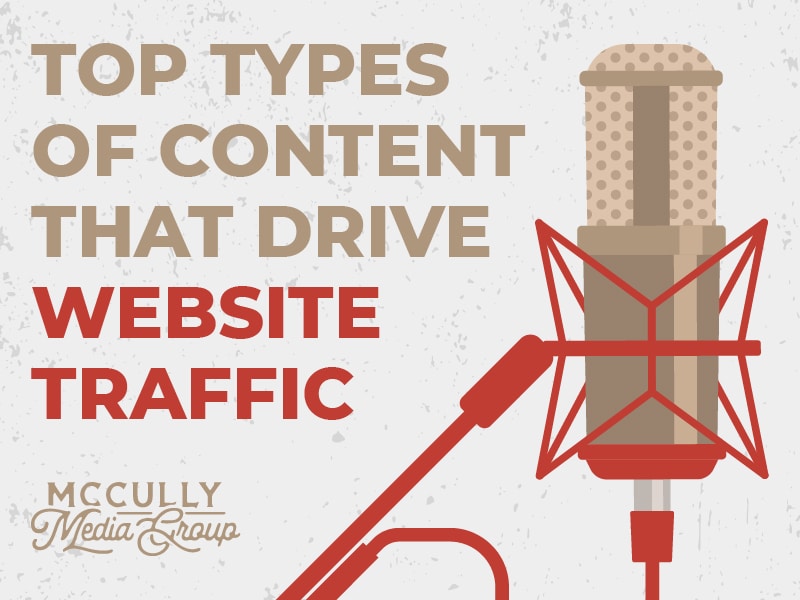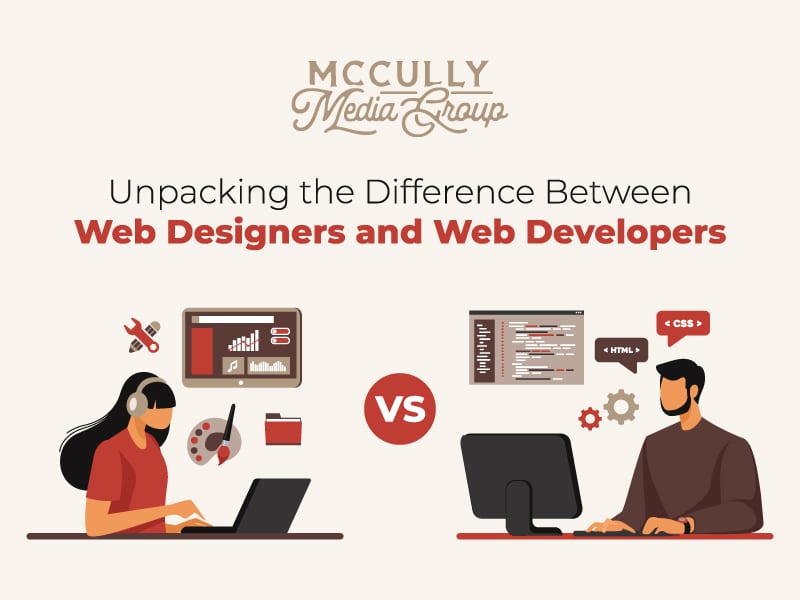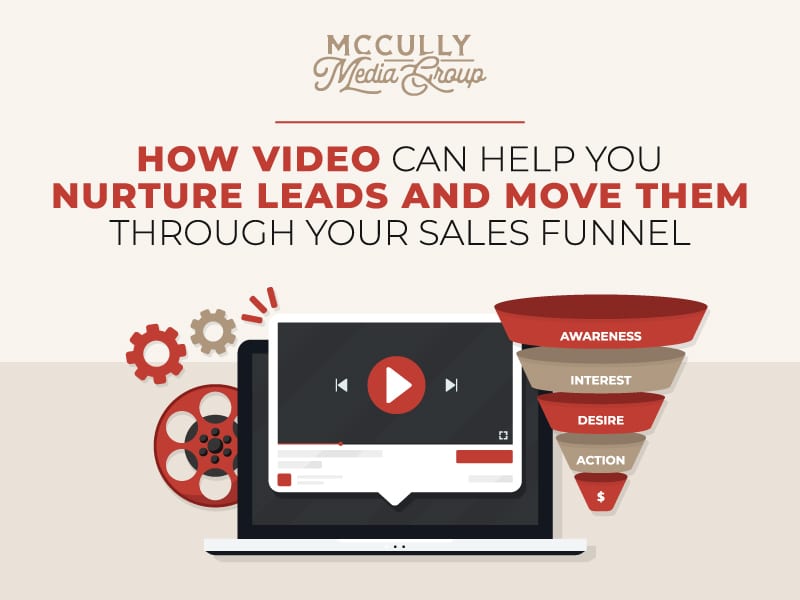A content marketing strategy is a powerful tool for any company looking to reach new customers. It’s become so prevalent in recent years that even small businesses are starting to create and publish content on their websites. Yet, despite the growing popularity of content marketing, many brands still struggle with how to create the type of content that drives website traffic. If you’re stuck wondering, “How can I get traffic from our content marketing strategy?” This blog post will help you figure out which content types are worth your time and effort.
How does an effective content marketing strategy drive website traffic?
Before we get into the types of content that drive website traffic you should create for your business, it’s essential to understand how publishing and distributing this content can help drive traffic back to a website.

When you publish original content on your website, it allows you to rank in search engines. Google and other popular search engines use algorithms that look for specific signals of authority when deciding where a piece of content should be ranked. If you create high-quality content, you can increase your chances of having your website show up in the top search results.
When creating high-quality content, the most crucial factor is to bring value to the reader easily and engagingly. Reader retention is the key to success in content marketing. If you can keep a reader’s attention for the entire duration of your article, they’ll be more likely to share it with their network and come back in the future.
There are many techniques for creating types of content that drive website traffic in which your prospects and customers will find valuable, but perhaps the most powerful is storytelling. Through frameworks like Storybrand, you’ll be able to write content that compels people to read through your articles and even take action afterward.
1. Blog posts – a great way to provide helpful advice and information.
Blog posts are a great way to provide helpful advice and information to your customers and prospects. When you answer common questions or address objections that arise when people consider buying from you, it helps them develop trust in your brand – making them more likely to purchase something. Plus, blog articles can be shared on social media networks like Facebook, Twitter, Google+, etc.
Blog posts also help increase your search engine rankings, which means that more people will find you by searching for a product or service they need online.
The top benefits of blog articles are:
- They build trust and authority in your brand.
- You can share them on different social media networks.
- They help increase search engine rankings (SEO) by building backlinks to your website.
The top blog article-based types of content that drive website traffic include:
- How-to posts
- Announcements/industry updates that your audience will be interested in (e.g., new product launches, changes to a service menu)
- Product reviews
- Market research findings related to a particular topic (e.g., new or changing trends)
2. Infographics – displays data in a more visual manner.

Infographics are a great way to display data more visually. They’re also typically quite shareable on social media networks, which can lead to increased exposure for your brand.
The top benefits of infographics are:
- Visuals are processed faster and more efficiently by the human brain.
- People naturally want to share infographics with others.
- Infographics can quickly increase engagement, which will result in higher conversion rates for you over time.
- People who view and share infographics tend to visit other pages where your logo appears (e.g., website, social media profiles). This increases awareness of your brand among potential prospects/customers.
The top types of infographic-based content that drive website traffic include:
- Charts and graphs show relevant demographic information about specific topics or markets (e.g., age ranges, income levels).
- Data-driven analysis highlighting the results of research studies related to one topic/industry (e.g., market trends, product performance).
- Animated graphics providing a quick guide to using your product/service or advice on how something works.
The best infographics tell a story and have a clear purpose. If you’re considering creating an infographic, ask yourself:
- What is the point I’m trying to make?
- How will it help my audience?
- Why should they care about this information?
- Am I going to include supporting content that explains what’s in the graphic and why (i.e., blog posts)
3. Videos – an excellent way to share your expertise with others.

Videos are an excellent way to share your expertise with others. Videos are particularly shareable on social media networks. For those who don’t have the time to read an entire article, videos can provide a quick introduction to what your brand is all about.
The benefits of using videos for content marketing include:
- They allow you to better connect with customers/prospects by creating more personal, human-to-human connections between brands and their audiences.
- Videos can be used to show people how your products/services work – which is excellent for those who are learning about new things.
- Videos allow you to demonstrate valuable skills and teach others something they didn’t know before (e.g., strategies, tips). This makes them more likely to trust you as a brand.
The top types of video content that drive website traffic include:
- How-to guides for using a product/service or advice on how something works helps establish trust because it shows people what you’re capable of doing and is useful if someone needs help figuring out how something works!
- Industry updates about changes/events affecting the market, industry, or company’s clients – these can be used as part of outreach campaigns to get thought leaders’ opinions on specific topics or issues; sharing them during events lets attendees know you’re invested in their success
- Customer testimonials and reviews are great because they prove that your product/service can help real people, which is a much more powerful motivator than trying to convince someone of something based on data or research findings alone!
4. Quizzes – a fun and interactive way for people to learn new things about you or your business.

Quizzes are fun, interactive ways for people to learn new things about you or your business. They’re also a great way of engaging with your audience in a light-hearted manner and showing them that you know what’s happening on social media – something millennials love!
The best quizzes have questions that can be answered quickly, typically taking less than a couple of minutes. If they can’t be completed this fast (e.g., there are too many questions), consider breaking it up into more than one quiz, so the user doesn’t get frustrated trying to answer all the prompts before giving up and moving on to another site/opportunity.
The benefits of using quizzes for content marketing include:
- They’re a fun way to engage with your audience and show that you know what’s happening on social media, which is especially important for brands trying to reach millennials.
- Quizzes can be used as part of outreach campaigns – e.g., offering links/codes in exchange for taking the quiz or sharing their results online.
- There are endless types of quizzes (e.g., fashion, music), so it’s simple to find one related to your brand/business.
Quizzes are so effective at driving traffic that some of the top content marketers are using them:
- BuzzFeed – quizzes drive a ton of traffic to BuzzFeed’s website and have helped them grow into one of the top media sites targeted at millennials
- Dr. Oz – The Dr. Oz website has seen a steady increase in traffic because of the many online quizzes he hosts on his site.
With top brands like these using quizzes for content marketing, they’re worth looking into.
5. Ebooks – provide valuable content that is easy for readers to digest and reference later on.

Ebooks provide valuable content that is easy for readers to digest and reference later on. Unlike traditional books, ebooks can be downloaded online within seconds of purchase. They’re also more interactive, allowing users to click through links or watch videos if so desired.
The benefits of using eBooks for content marketing include:
- They can be used as lead magnets to build your email list – e.g., offering a free ebook in exchange for signing up.
- Ebooks can help establish trust because they’re more educational and informative than an infographic or blog post.
- Since eBooks are so easy to consume (e.g., by being read online or through audio), you should try including links throughout the text that take readers to related articles/pages on your website if they want additional information. This helps generate visits back to your site while also providing value.
The top kinds of eBooks any company can use are:
- Industry reports – report on industry trends, events, changes, etc.
- Company overviews – give users a more in-depth look at the company and its mission/vision from an employee perspective.
- Product use cases – provide examples of how your product was used to solve a problem or make something more manageable.
6. Podcasts – allows listeners the opportunity to hear from experts in their field of interest regularly.

Podcasts are audio-based programs that allow listeners to hear from experts in their field of interest regularly. This helps build trust and credibility among potential clients because they feel like an “insider” by getting to know the host(s) and guests on a more personal level.
Podcasting is another great content strategy to provide listeners with valuable insights (via guest experts), which helps establish authority in one’s industry.
The benefits of using podcasts in your content marketing strategy include:
- They’re easy to consume and can be downloaded at one’s convenience.
- Podcast hosts can engage with listeners personally, which can help establish trust among potential clients.
- They offer companies yet one more avenue through which they can share their expertise.
- Creates opportunities for brands to position themselves as influencers or thought leaders in specific fields.
Some great podcast ideas would be:
- Industry expert interviews – provide listeners with valuable insights from industry experts.
- Company/product overviews – provide a more in-depth look at the company and its mission/vision.
- Industry tips & advice
While preparing to record any audio content, marketers must be fully prepared. This includes knowing what direction each episode will take and having an outline for all questions asked during the interview process, as well as potential topics to touch on throughout the show. Preparation is key to producing high-quality podcasts!
Podcasts work best when they’re consistent and regular – the content must be relevant, of high quality, and fresh, so listeners don’t lose interest. Do not underestimate the power of publishing great audio-based content in this ever-growing digital age.
7. Case studies – offers insight into your business and results.

Case studies can be an excellent resource for marketers when it comes to demonstrating the results they’ve gotten for other clients and/or companies. They provide interesting prospects with valuable insights into how your products have helped those with similar challenges as them.
The benefits of using case studies in your content marketing strategy include:
- They’re easily consumable and can be read online, downloaded as a PDF, or printed out.
- The details included in case studies (e.g., numbers and results) are typically more thorough than testimonials – prospects appreciate this.
- Case studies allow companies to provide the “behind-the-scenes” story behind their products/services, which helps establish trust among potential clients.
- Many customers find case studies helpful because they allow them to hear about real-life situations from someone who’s been through the same thing as them, rather than just being provided with information on the features/benefits of using a particular product. They want to know that others have successfully benefitted from working with you too.
8. Surveys – helps companies understand what customers want so they can improve future products or services offered.

Surveys are an excellent way for companies to gather feedback and insights from the people they’re trying to reach. They help marketers understand what customers want to improve upon future products or services offered to those same clients to make them more useful, relevant & valuable (which will ultimately result in higher engagement rates).
The benefits of using surveys in your content marketing strategy include:
- It helps gather information and insights to help companies create better products/services for their customers, so they don’t go ignored or misunderstood.
- Surveys are easy to comprehend – the data gathered from them is typically presented in a straightforward, organized & insightful manner.
- Many people find surveys helpful because of how quick and painless it can be to fill one out. They’re also much more likely to respond to email-based polls than phone calls or live chats, making for a more straightforward process overall.
- You’ll have access to answers right away.
The critical thing marketers should keep in mind when using surveys as part of their marketing strategy is not overloading respondents with too many questions, resulting in higher bounce rates and lower engagement. Instead of asking several queries at once, it’s best to break the survey up into several shorter sections so that those completing have more manageable chunks to take on rather than one overwhelming form/page.
Conclusion
Remember that content marketing is a process, not an event. You’ll need to commit time and effort for it to work as intended – but the payoff can be well worth it. Also, keep in mind that every brand has something unique about them which makes their story compelling & exciting, so make sure you’re able to highlight that somehow, whether through your blog posts or other pieces of content (e.g., infographics). Don’t be afraid to get creative with how you approach sharing these stories, either! As long as they’re genuine and honest, people will appreciate the insight into what makes your business different from everyone else’s. If you need help with your content marketing initiatives, be sure to contact us today. We’d love to hear from you!
Learn More:
This Is How to Create a Profitable Content Marketing Strategy Using 7 Essential Steps
7 Steps to Creating the Perfect StoryBrand Narrative






